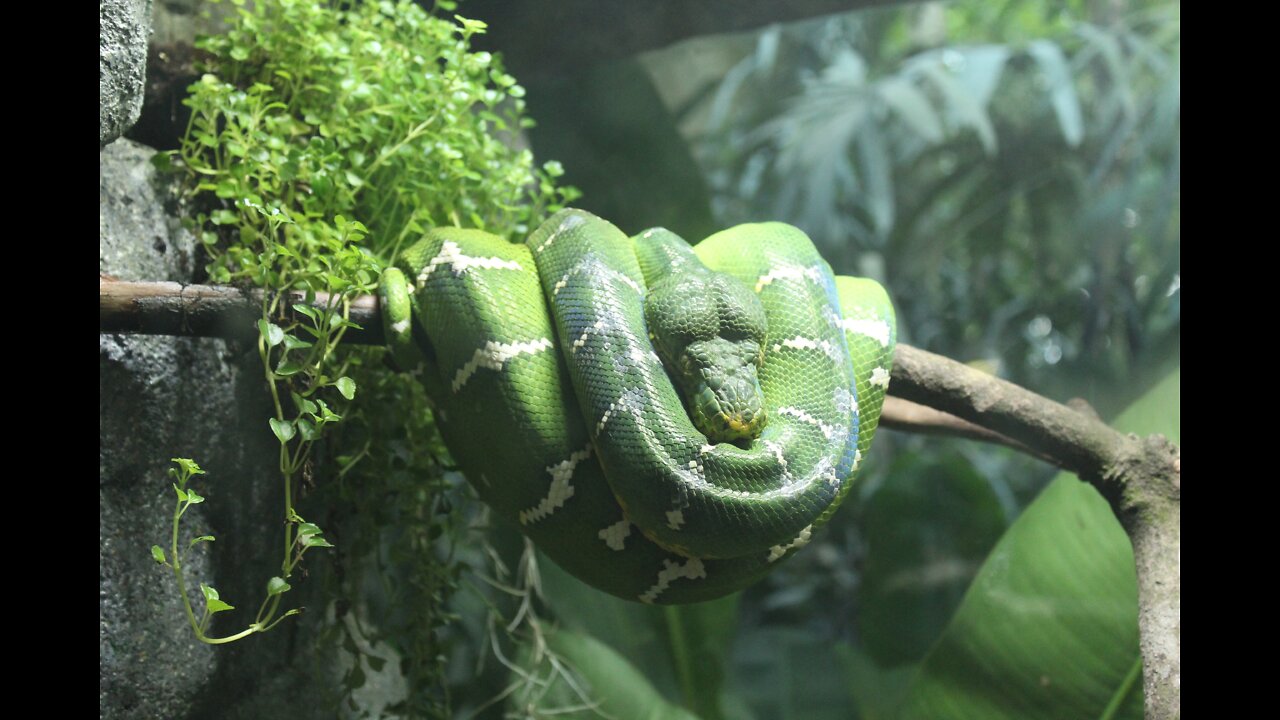Premium Only Content

Close up view of wild snakes. 4K
There are more than 3,000 species of snakes on the planet and they’re found everywhere except in Antarctica, Iceland, Ireland, Greenland, and New Zealand. About 600 species are venomous, and only about 200—seven percent—are able to kill or significantly wound a human.
Nonvenomous snakes, which range from harmless garter snakes to the not-so-harmless python, dispatch their victims by swallowing them alive or constricting them to death. Whether they kill by striking with venom or squeezing, nearly all snakes eat their food whole, in sometimes astoundingly large portions.
Almost all snakes are covered in scales and as reptiles, they’re cold blooded and must regulate their body temperature externally. Scales serve several purposes: They trap moisture in arid climates and reduce friction as the snake moves. There have been several species of snakes discovered that are mostly scaleless, but even those have scales on their bellies.
How snakes hunt
How snakes hunt
Snakes also have forked tongues, which they flick in different directions to smell their surroundings. That lets them know when danger—or food—is nearby
Snakes have several other ways to detect a snack. Openings called pit holes in front of their eyes sense the heat given off by warm-blooded prey. And bones in their lower jaws pick up vibrations from rodents and other scurrying animals. When they do capture prey, snakes can eat animals up to three times bigger than their head is wide because their lower jaws unhinge from their upper jaws. Once in a snake’s mouth, the prey is held in place by teeth that face inward, trapping it there.
Habits
About once a month snakes shed their skin, a process called ecdysis that makes room for growth and gets rid of parasites. They rub against a tree branch or other object, then slither out of their skin head first, leaving it discarded inside-out.
Most snakes lay eggs, but some species—like sea snakes—give live birth to young. Very few snakes pay any attention to their eggs, with the exception of pythons, which incubate their eggs.
There are roughly a hundred snake species listed by the IUCN Red List as endangered, typically due to habitat loss from development.Here’s a fact to make ophidiophobes feel uneasy: Five species of snakes can fly.
-
 31:31
31:31
Uncommon Sense In Current Times
16 hours ago $1.11 earnedHow This War in Israel Was Prophesied | Joel Chernoff
17.7K1 -
 55:12
55:12
Esports Awards
14 hours agoBarney Banks on Esports, TikTok Fame, Dancing & More | Origins Podcast #1
17.1K1 -
 6:38
6:38
Mrgunsngear
13 hours ago $7.35 earnedTrump's ATF Removes Zero Tolerance Policy For FFLs & More 🇺🇸
25.7K20 -
 22:07
22:07
JasminLaine
15 hours agoWatch CBC Realize They Can’t Save Carney—Poilievre Calls Him a “Political Grifter”
29K27 -
 58:51
58:51
Motherland Casino
9 hours agoPaula x Barbara
16.7K2 -
 4:27:58
4:27:58
Delnorin Games
6 hours ago🔴 Live - Call of Duty
9.67K1 -
 13:19
13:19
Bearing
1 day agoAustralian Prime Minister FALLS OFF STAGE Then Denies it Happened 🤣😂
23.5K53 -
 2:44:48
2:44:48
Price of Reason
15 hours agoTrump Tariff Mania CONTINUES! China vs Hollywood! Bezos Under FIRE! Sweet Baby Inc FAILS Again!
42.8K4 -
 2:39:40
2:39:40
TimcastIRL
12 hours agoTrump To Impose 104% TARIFF On China At Midnight In NUCLEAR BOMB On Global Trade | Timcast IRL
276K141 -
 1:54:27
1:54:27
Glenn Greenwald
14 hours agoAs Tariffs Dominate News, Trump and Netanyahu Make Increasingly Militaristic Threats; Plus: Mixed Supreme Court Ruling on Deportation Powers | SYSTEM UPDATE #435
177K208